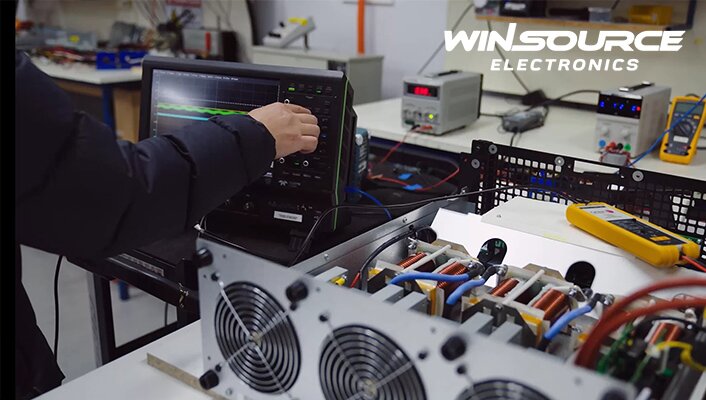
Table of Contents
ToggleIntroduction
Rectifiers convert AC to DC in electrical engineering. They are important but often overlooked. Rectifiers keep our electrical devices running smoothly, whether it’s charging a phone, powering a laptop, or driving an electric car. In this article, we’ll look at rectifiers, what they are, how they work, and the different types used in modern technology.
What is a rectifier?
A rectifier is an electrical device or circuit that converts alternating current (AC) into direct current (DC). A rectifier makes sure that the current flows in one direction by rectifying the input voltage. It stops the negative half-cycle that usually happens in alternating current.
This transition is critical because many electronic devices and systems operate on DC power. Power supplies, electronic equipment, and power transmission systems commonly contain rectifiers.
How does a rectifier work?
Rectifiers work on the principle of semiconductor devices (most commonly diodes). A diode is a solid-state component that allows current to flow in one direction while blocking current flow in the other direction. When an AC voltage is applied to a diode, it allows current to flow during the positive half-cycle and blocks it during the negative half-cycle, essentially converting AC into pulsating DC.
Type of rectifier
Half-wave rectifier: The simplest form of rectifier, which uses a single diode to convert only half of the AC waveform to a DC waveform. This method is rarely used in practical applications due to low efficiency and pulsating output.
Full Wave Rectifier: Full wave rectifiers are more efficient and are commonly used in many applications. They use four diodes in a bridge to change the AC waveform into a DC waveform.
Bridge Rectifier: A bridge rectifier is a specific full-wave rectifier design that uses four diodes to rectify alternating current. It is widely used in power supplies, battery chargers and various electronic equipment.
Center Tap Rectifier: This rectifier configuration uses a center tapped transformer and two diodes to convert AC to DC. It provides a DC output with less ripple than a bridge rectifier.
Voltage Doubler Rectifiers: These rectifiers use diode capacitors to stack rectification stages and increase DC voltage levels.
Rectifier Applications
Rectifiers play a vital role in various aspects of our daily lives and industrial applications:
Power Supply: A rectifier changes AC from the grid into DC needed by electronic devices. It’s important for power supplies.
Battery charging: Devices such as smartphones, laptops, and electric cars rely on rectifiers to charge their batteries.
Power transmission: High-voltage DC lines use rectifiers to convert AC to DC for efficient long-distance power transmission.
Audio Amplification: A rectifier in audio equipment changes the AC signal from a microphone or instrument into a usable DC voltage for amplification.
Industrial Processes: Rectifiers are used in a wide range of industrial applications including electroplating, electrochemical processes and welding.
In conclusion
Rectifiers covert AC to DC, powering the modern world. They are essential in electrical engineering, working silently and efficiently. Rectifiers are important for keeping our electrical systems running well, from small devices to big industries. Understanding the different types of rectifiers and their applications is key to understanding their importance in our lives.

COMMENTS